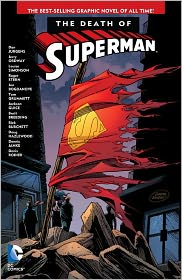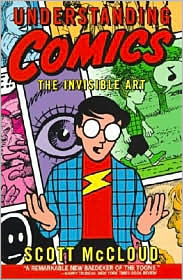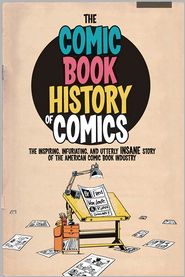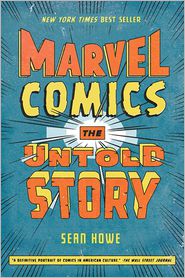8 Lessons Learned Going Through a Comic Book Collection
 When I got my first house a few years back, after being an apartment dweller for all of my adult life, my parents took great delight in delivering me storage containers packed with the stuff I’d left sitting in their house for about two decades. Most of these bins contained the comics I’d collected as a kid, from the 1970s, off and on into the early ‘90s.
When I got my first house a few years back, after being an apartment dweller for all of my adult life, my parents took great delight in delivering me storage containers packed with the stuff I’d left sitting in their house for about two decades. Most of these bins contained the comics I’d collected as a kid, from the 1970s, off and on into the early ‘90s.
I kept meaning to go through them and catalog what I had, but it took several years to get around to it. Hey, don’t judge me! I was busy.
Sorting through the over 1,800 comics wasn’t just a stroll down memory lane. There were many valuable lessons to be learned.
The Death of Superman
The Death of Superman
By
Dan Jurgens
,
Jerry Ordway
,
Louise Simonson
Illustrator
Jon Bogdanove
,
Tom Grummett
Paperback $14.99
Lesson #1: It’s easy to value the wrong thing
My first realization was that I have very often been an idiot. When I first started reading comics, I had no idea they might be valuable collectibles. I just stacked them up in a trunk in my closet. Years later, I learned more about how important it was to protect comics by putting them in special plastic bags with cardboard backing boards, but this wasn’t until the comic boom of the early 1990s. I decided that since the older comics I had were already far from mint condition, I should focus my preservation efforts on the new comics I was buying that were.
So all the comics I have from the 1990s were carefully bagged, but many of my older ones from the ‘70s were just stacked in boxes. Because I was sure back then that no one would ever want Marvel’s first run of Star Wars comics, but all those new #1 issues with special variant foil covers would be worth a fortune someday. That was pretty much my entire retirement plan.
Like I said. I’m an idiot.
Lesson #2: Even plastic doesn’t last forever
When I bagged up those comics, I assumed they were permanently preserved, like the face of an aging movie star with a good plastic surgeon. I was shocked to find that many of the bags had yellowed and become somewhat brittle. Some of the comic boards were also showing reddish imprints from the back covers.
A little research taught me that these are relatively common problems with the cheaper bags and boards of the type commonly available back in the ‘90s, and that putting comics into new bags with fresh boards was recommended every so often. Apparently leaving issues in old plastic pressed against the wrong kind of cardboard is like storing them in jars of acid.
Maybe I wasn’t such an idiot to leave those old comics loose after all.
Lesson #1: It’s easy to value the wrong thing
My first realization was that I have very often been an idiot. When I first started reading comics, I had no idea they might be valuable collectibles. I just stacked them up in a trunk in my closet. Years later, I learned more about how important it was to protect comics by putting them in special plastic bags with cardboard backing boards, but this wasn’t until the comic boom of the early 1990s. I decided that since the older comics I had were already far from mint condition, I should focus my preservation efforts on the new comics I was buying that were.
So all the comics I have from the 1990s were carefully bagged, but many of my older ones from the ‘70s were just stacked in boxes. Because I was sure back then that no one would ever want Marvel’s first run of Star Wars comics, but all those new #1 issues with special variant foil covers would be worth a fortune someday. That was pretty much my entire retirement plan.
Like I said. I’m an idiot.
Lesson #2: Even plastic doesn’t last forever
When I bagged up those comics, I assumed they were permanently preserved, like the face of an aging movie star with a good plastic surgeon. I was shocked to find that many of the bags had yellowed and become somewhat brittle. Some of the comic boards were also showing reddish imprints from the back covers.
A little research taught me that these are relatively common problems with the cheaper bags and boards of the type commonly available back in the ‘90s, and that putting comics into new bags with fresh boards was recommended every so often. Apparently leaving issues in old plastic pressed against the wrong kind of cardboard is like storing them in jars of acid.
Maybe I wasn’t such an idiot to leave those old comics loose after all.
Understanding Comics: The Invisible Art
Understanding Comics: The Invisible Art
In Stock Online
Paperback $27.99
Lesson #3: Your old hobby can cost you a lot of money today
After learning I needed to put my comics in new plastic, the question became, what kind? And how should I store them? I finally chose a brand of bags and boards, and then figured out how I could store them. My method probably isn’t what a hardcore collector would advise, but it still cost me a small fortune and was an improvement on how they had been stored for the last 20 years. I figure that will give me time to save up for whatever method science can come up with to preserve them in the future, which I assume will be freezing them in carbonite.
Lesson #4: Clear your calendar
I knew that putting over 1,800 comics in fresh bags would take some time, but it took longer than I thought. A lot longer. Partly because when I kept getting distracted reading them and wanting to answer questions that came up. It’s easy to waste an hour online reading about why some of your old D.C. comics were actually published by Whitman.
Lesson #3: Your old hobby can cost you a lot of money today
After learning I needed to put my comics in new plastic, the question became, what kind? And how should I store them? I finally chose a brand of bags and boards, and then figured out how I could store them. My method probably isn’t what a hardcore collector would advise, but it still cost me a small fortune and was an improvement on how they had been stored for the last 20 years. I figure that will give me time to save up for whatever method science can come up with to preserve them in the future, which I assume will be freezing them in carbonite.
Lesson #4: Clear your calendar
I knew that putting over 1,800 comics in fresh bags would take some time, but it took longer than I thought. A lot longer. Partly because when I kept getting distracted reading them and wanting to answer questions that came up. It’s easy to waste an hour online reading about why some of your old D.C. comics were actually published by Whitman.
Comic Book History of Comics
Comic Book History of Comics
By
Fred Van Lente
Illustrator
Ryan Dunlavey
Paperback $21.99
Lesson #5: Comics used to be really cheaply made
With comics today printed on high quality glossy paper, it’s easy to forget their pulp roots, when they were essentially made from a couple of staples hold some cheap newsprint together. Flipping through the old books, with their blurred ink and rough paper, can feel like reading an ancient scroll compared to the books today.
It’s especially jarring when looking at books from the ‘90s that often featured flashy embossed covers emblazoned with gimmicks like hologram cards. The outside looks slick and modern, but the interior is still an old school comic book.
Lesson #6: A medium’s popularity can be gauged by its ads
If you check out a run of comics over a number of years, you can see a distinct upward trend in the quality of the advertising and the products being sold. My comics from the 1970s still featured novelty items and Sea Monkeys, but as time went on, there were more and more mainstream ads for things like toys, video games, TV shows, and movies. My personal favorites remain the one-page ads from Hostess in which various famous superheroes fight crime with the help of snack cakes and fruit pies.
Lesson #5: Comics used to be really cheaply made
With comics today printed on high quality glossy paper, it’s easy to forget their pulp roots, when they were essentially made from a couple of staples hold some cheap newsprint together. Flipping through the old books, with their blurred ink and rough paper, can feel like reading an ancient scroll compared to the books today.
It’s especially jarring when looking at books from the ‘90s that often featured flashy embossed covers emblazoned with gimmicks like hologram cards. The outside looks slick and modern, but the interior is still an old school comic book.
Lesson #6: A medium’s popularity can be gauged by its ads
If you check out a run of comics over a number of years, you can see a distinct upward trend in the quality of the advertising and the products being sold. My comics from the 1970s still featured novelty items and Sea Monkeys, but as time went on, there were more and more mainstream ads for things like toys, video games, TV shows, and movies. My personal favorites remain the one-page ads from Hostess in which various famous superheroes fight crime with the help of snack cakes and fruit pies.
Marvel Comics: The Untold Story
Marvel Comics: The Untold Story
By Sean Howe
In Stock Online
Paperback $19.99
Lesson #7: If it was a TV show or movie, it was probably a comic book too
No surprise to find tie-in comics to things like Star Wars, Star Trek, Battlestar Galactica, Indiana Jones, Robocop, Quantum Leap and The X-Files. It’s even understandable why cartoons like The Simpsons and Ren & Stimpy would have their own titles. But did the world really need that Married With Children comic book?
Lesson #8: Forgotten gems
While there were plenty of headaches, there were also moments that made the aching back and raw fingers worth it. Coming across a favorite issue of The Brave and the Bold that I loved as a kid, or realizing that I had a valuable comic featuring the first appearance of Deadpool, were the moments that reminded me why I had enjoyed collecting and reading all these books in the first place, and made all the work to preserve them worth it.
Lesson #7: If it was a TV show or movie, it was probably a comic book too
No surprise to find tie-in comics to things like Star Wars, Star Trek, Battlestar Galactica, Indiana Jones, Robocop, Quantum Leap and The X-Files. It’s even understandable why cartoons like The Simpsons and Ren & Stimpy would have their own titles. But did the world really need that Married With Children comic book?
Lesson #8: Forgotten gems
While there were plenty of headaches, there were also moments that made the aching back and raw fingers worth it. Coming across a favorite issue of The Brave and the Bold that I loved as a kid, or realizing that I had a valuable comic featuring the first appearance of Deadpool, were the moments that reminded me why I had enjoyed collecting and reading all these books in the first place, and made all the work to preserve them worth it.



